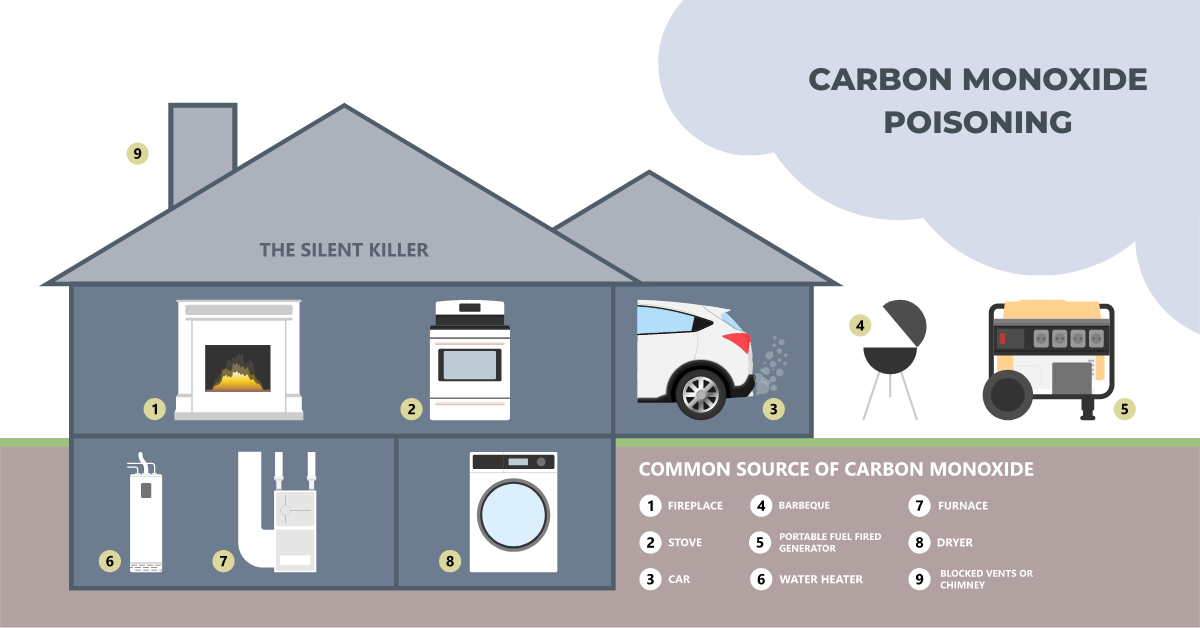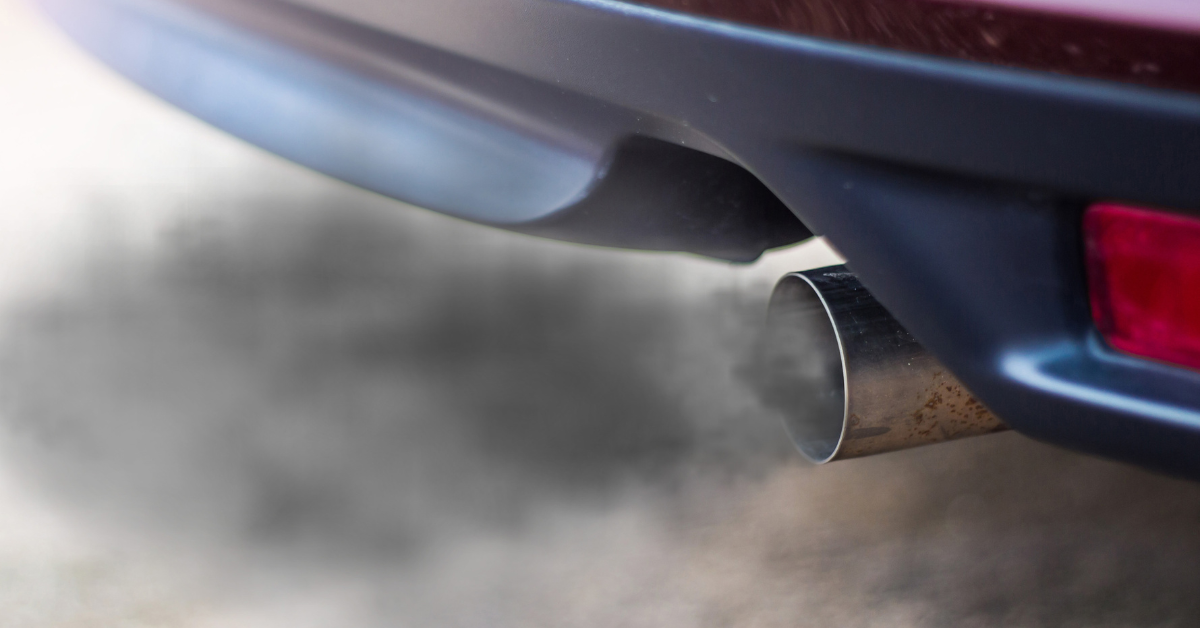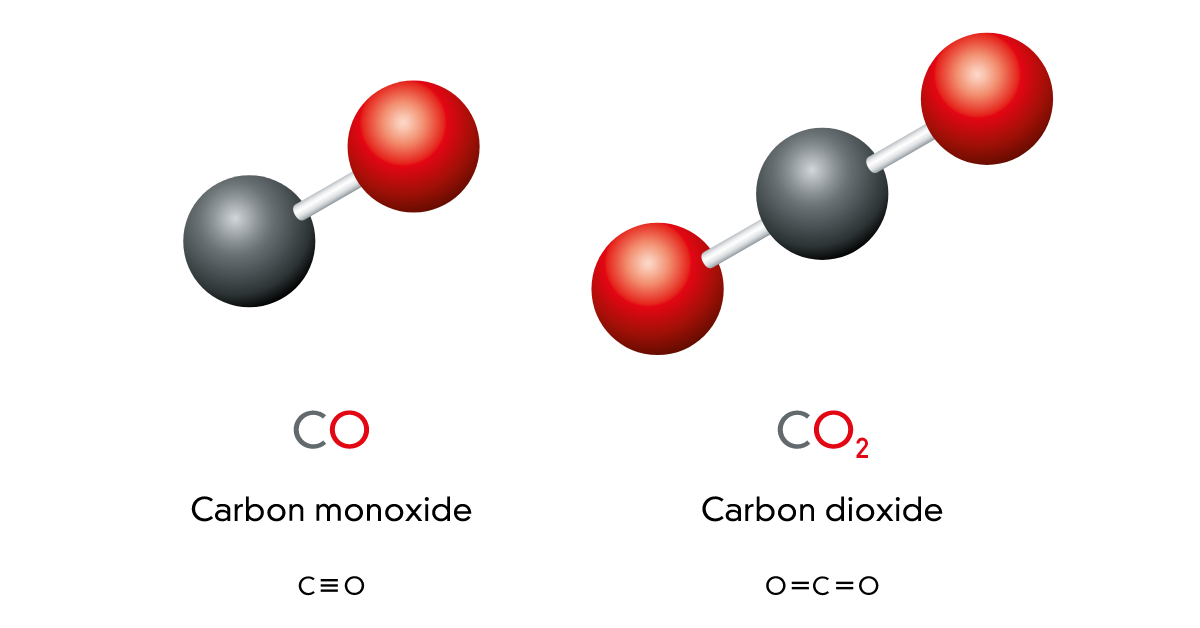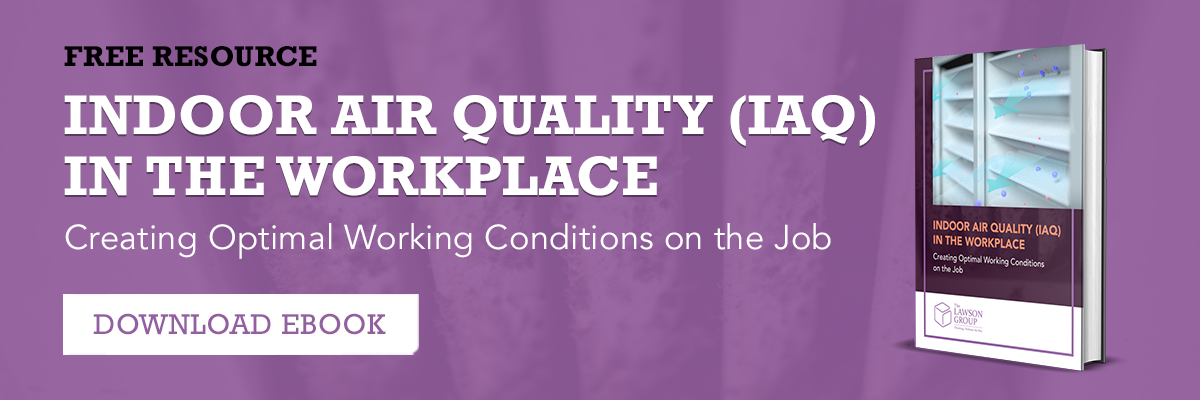Two substances that are often confused with each other—but shouldn’t be—are carbon monoxide (CO) and carbon dioxide (CO2). Here’s what you need to know about CO and CO2, and when you should start worrying about them.
Carbon Monoxide
Carbon monoxide (CO) is not naturally occurring and is considered toxic to humans. It results from incomplete combustion, such as faulty gas or oil-fired water heaters or boilers, or from a motor vehicle or forklift exhaust.
CO combines with components of your blood to inhibit the blood’s ability to transport oxygen through your body. In fact, your blood has an affinity for CO that is 230 times GREATER than its affinity for oxygen which means if there is any CO present where you are, your blood is likely to “glom” onto it!
Because CO “ties” up your body’s ability to process oxygen, at high levels of CO, you can be “overcome” and unconscious and in extreme cases, you can die.

Carbon Dioxide
Carbon dioxide is what we all breathe out. Trees take it in and use it to produce oxygen.
Naturally occurring CO2 outside of a building is between about 350 and 450 parts per million, depending upon where you live.
It is not toxic to humans but in extremely high concentrations, such as in very poorly ventilated, high occupancy buildings, occupants may become “drowsy” as it is thought that the high levels of CO2 are actually displacing some of the oxygen making it harder for occupants to breathe enough oxygen.
We often use CO2 as an indicator of general air quality, but more importantly, how well-ventilated a building is. With a proper ventilation system, your workspace should exchange air often enough to maintain a similar level of CO2 inside the building as outside, but that's rarely the case and, in New England, very difficult, and very expensive, to do.
To achieve decent indoor air quality, some groups suggest ventilating workspaces so that levels of CO2 are below 1,000 parts per million (PPM). This is only meant to be a “guideline” and not a regulatory standard. Anecdotally, we routinely see indoor air quality complaints when CO2 levels reach about 700 ppm.
How We Test
Levels of both CO2 and CO can be monitored by instruments that are “direct reading”. In other words, the instrument will tell you what the level of contaminant is as soon as you turn it on.
In most cases, the same instrument can be left sampling “all day” or longer to determine what workers may be exposed to over time so you can compare the monitoring data to compliance standards such as those used by OSHA.
The Solution
The old air quality “saw” is “dilution is the solution to pollution”, i.e., the more “fresh” air you introduce, the lower the level of contaminants will be in the ventilated space.
High levels of CO2 are usually associated with indoor air quality issues in offices and schools rather than as contaminants in manufacturing or industrial settings. High levels of CO2 in an office environment generally indicate poor air quality exchange and not enough outdoor, fresh air being introduced. If this is the case, there may be other issues, such as mold, irritant dust, and perhaps chemicals such as formaldehyde and those chemicals used in cleaning products.
In many cases, increased ventilation rates (fans running while the building is occupied to bring in more fresh air) and better housekeeping (HEPA vacuuming and wet wiping instead of dry sweeping) can greatly improve indoor air quality.
In the case of CO, in most industrial settings, forklifts or trucks may be the source of CO and you can minimize the levels of CO by having the engines in this equipment better tuned and in some cases, provided better exhaust systems. In some cases, these vehicles are left running for no good reason and that can increase the levels of CO as well. If these vehicles can be turned off when they are not being driven, it would help immensely.
In warehouses where a fleet of forklifts is being used, electric forklifts can be considered, though providing exhaust ventilation may be the only answer.

About The Lawson Group
Since 1978, The Lawson Group has been in the “White Horse” business. That is to say, we help companies do things that are ultimately good for them that they are sometimes not aware of.
Our first endeavor was worker health and safety, mostly related to OSHA compliance issues, focusing on the industrial hygiene side of that equation regarding chemicals and noise, indoor air quality, and lead and asbestos in the workplace.
Since becoming a third-party administrator in 1994, we now manage the workers’ comp programs for over 300 New Hampshire employers. In 2000, we entered the employee wellness business. Our primary effort is to work with employers and their employees to make better use of their health insurance dollars by working to help them become healthier and better consumers of healthcare.
We welcome your inquiries regarding our services—contact us to learn more.








